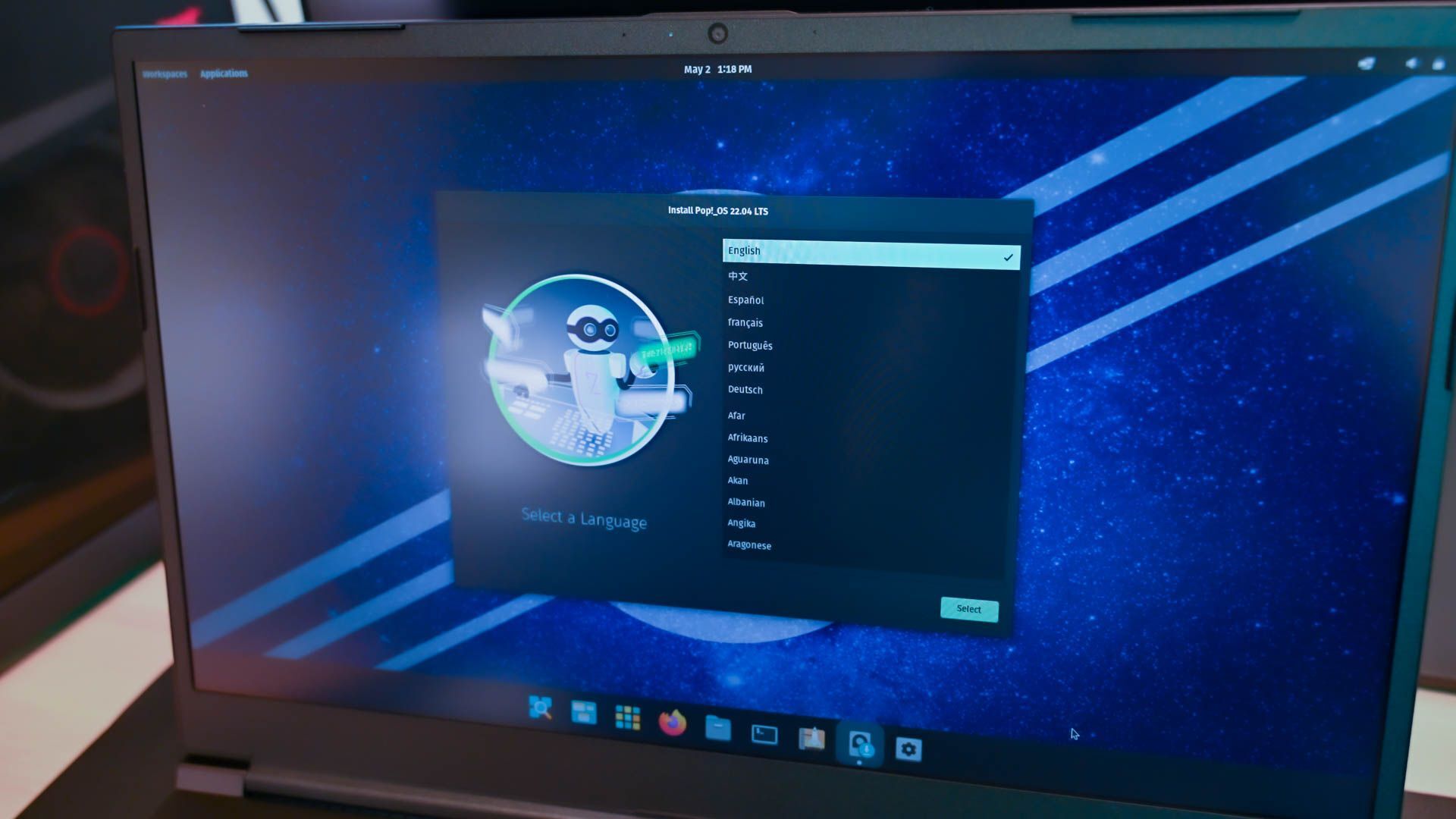Ubuntu’s popularity often makes it the default choice for new Linux users. But there are tons of other Linux operating systems that deserve your attention. As such, I’ve highlighted some Ubuntu alternatives so you can choose based on your needs and requirements—because conformity is boring.
From an engineering perspective, I prefer Debian distros. Apt is the greatest package manager ever built. For a production server, I’d choose Debian or maybe Ubuntu if I needed to pay someone for support.
But for a desktop, Ubuntu kinda sucks. These days, I think I’d recommend Fedora to Linux noobs.
And for my toys at home, I run Arch btw.
Heard. Debian in the streets, Arch in the sheets!
What about Ubuntu derivatives for desktop? My go to recommendations are Pop! OS and Linux Mint (which I use).
Linux Mint Debian Edition is my standard recommendation for desktop for those newer folks.
Straight up Debian for everything else. Debian is my desktop. And all of my servers (aside from some things I’m testing for work or something where I need to test against RHEL or something).
And Proxmox for VMs.
Pop! Os user going on a year now and I can’t recommend it enough, at least as a first distro.
the de matters more for new users honestly, so I usually recommend: gnome: ubuntu
kde: kde neon
cinnamon: mint
cosmic: popand just let them choose what they want
Apt is the greatest package manager ever built.
What’s your rationale for making that claim?
See the other thread.
TL;DR: Useful abstractions and a hell of a dependency solver.
How do you compare it with Pacman?
I was fighting rpm hell on redhat for the 3rd or 4th time using red hat linux 5 to 6 or perhaps 6 to 7. When i first installed debian potato on my daily driver. We had 20 ish servers, but the constant hunt for the right combo of rpm’s made me distro jump my own machine. A while later i was floored when i could apt-get full-upgrade to the next debian version without rpm hell and almost everything just worked. Never installed another redhat machine and have been using debian + kde ever since. And 99,3% of all servers i maintain are now debian. A few odd ubuntu machines for $$reasons.
Is rpm hell gone for good nowadays?
I think yum does a better job. But i never installed another redhat machine so who knows. Been thousands of debian machines over the years tho. Luckily now it is right click -> vm from template or terraform apply. and not hours swapping floppy discs ;)
Bit of a noob but what’s the practical differences between Apt and the others. I use Fedora and the only difference I notice is that instead of typing apt update and apt upgrade, I just type dnf update.
Practical difference: Both dnf and apt are slow as hell. Pacman is flying compared to them.
In terms of practical differences to normal people, there aren’t many, and it pretty much comes down to the syntax of using them and the speed at which they work.
Personally I like the syntax of using dnf, even if it is kinda slow, especially compared to the likes of pacman.
Apt is the greatest package manager ever built.
Urgh, no, it’s not. Everything about it is super crusty if you go beyond simply installing packages and adding others’ PPAs IMO.
- Packages often enable the services they install right away. Someone told me they got locked out over SSH because they installed a firewall package that locked everything down by default, and the service got started on install. I guess that’s technically more of an issue with the way things are packaged rather than the package manager itself, though.
- To temporarily install a package (so that it will get uninstalled with the next autoremove) you need to use aptitude to install the package, or run apt-mark auto after installing (which will also clear the manually installed flag if it was manually installed before), apt has no syntax for it.
- dpkg-scanpackages is eternally slow, I had to write a wrapper for it that runs it separately for every package and caches the result because I didn’t want to wait multiple minutes for it to rebuild the PPA package index
- The standard packaging tools (dh-make or debuild, I think I’ve looked at both) are insane, so much so that I gave up and wrote something that takes files similar to Arch PKGBUILDs which calls dpkg-deb at the very end.
I could probably list more but I haven’t had to touch apt in a while, thankfully. But it is probably the #1 reason I avoid anything Debian-based. #2 is probably their Frankenstein sysvinit/systemd setup.
I do have to say that apt remove vs purge is pretty cool though.
What do you like about it?
Packages often enable the services they install right away.
That’s a problem of the package, not the package manager.
Generally this fits with Debian’s philosophy. But regardless I think it’s out-of-scope for why Apt is good. You could make a distro with Apt and not have your packages do this.
To temporarily install a package […]
I’m not talking about
aptthe CLI tool, but the actual package manager. The plainapttool is only designed to be a convenience wrapper for common workflows implemented in other tools.As you correctly pointed out, Apt has the distinction between packages installed as a dependency (“auto installed”) versus packages installed directly (“manually installed”). This is precisely one of the reasons why I consider Apt the best package manager. (Yes, I know other package managers can do this, not all though.)
If you want to install a package as manual, then later mark it as auto, you can do that with
apt-mark.dpkg-scanpackages is eternally slow.
Are you maintaining a PPA for others?
Frankly, I’ve never run into this problem.
The standard packaging tools […] are insane.
dh_makehelps you create a package that adheres to Debian policy, and there is good reason for Debian to have those policies. But if you’re just packaging something yourself, you don’t have to use it. It’s just a template for new packages.At the end of the day, all you really need to create a deb is to create two files
debian/controlanddebian/rules. These are the equivalent to a PKGBUILD. The control file specifies all of the dependency metadata, and therulesfile contains the install script.The difference in packaging philosophy is that PKGBUILDs are external and they download the upstream sources. On the other hand, in Debian, they rehost the upstream package and add the
debiandirectory. This means that building Debian packages is mostly hermetic: you don’t need access to the network.What do you like about it?
Mostly that it makes super useful distinctions between concepts. But there are other goodies.
- Manually installed versus auto installed.
- Uninstalled versus purged.
- Upgrade versus Dist Upgrade.
- Dependency versus suggestion versus recommendation.
- The alternatives system.
- Pinning, and relatedly that packages can include version constraints in their dependencies.
- Interactive configuration at install time.
- Support for both source and binary packages.
I also do appreciate that Debian pre-configures packages to work together with the same set of conventions out of the box. But again, that’s a property of the packages, not of Apt.
I’m not talking about apt the CLI tool, but the actual package manager. The plain apt tool is only designed to be a convenience wrapper for common workflows implemented in other tools.
Sure, but the interface is probably just as important as the actual logic behind it, isn’t it?
As you correctly pointed out, Apt has the distinction between packages installed as a dependency (“auto installed”) versus packages installed directly (“manually installed”). This is precisely one of the reasons why I consider Apt the best package manager.
Honestly I would consider that one of the fundamental things a package manager must do, I didn’t think it was a special thing haha
If you want to install a package as manual, then later mark it as auto, you can do that with
apt-mark.Yeah, I know. But if you want to manually install a package like that, you have to remember the extra step after it’s finished installing instead of before the install. It’s just unergonomic, for something that could be a flag (e.g. in
emerge -1) and that I at least use fairly often.Another problem with it being a two-step thing is that if you do it unconditionally in a script, it doesn’t retain the flag from before the previous installation command, you need a third step, i.e. checking if the package was installed before. My use case for this was installing dependencies for a package build which should be able to be removed again afterward, while not affecting the subset that were already installed explicitly.
Now that I think about it, it’s probably a good idea to always check if a package needs to be installed before installing it if you script it, though, because otherwise it might be unnecessarily reinstalled. Fair enough.
Are you maintaining a PPA for others?
Yeah, I maintain some software/config/meta packages for the computers at the uni I study at. Before, I’m pretty sure the packages were manually packaged with every update and I wanted to automate it a bit and also make clear how to get from the source tarballs to the final build.
On the other hand, in Debian, they rehost the upstream package and add the debian directory. This means that building Debian packages is mostly hermetic: you don’t need access to the network.
Ahh, the way it’s structured makes a lot more sense knowing that. Coming from packaging stuff for Arch, Gentoo and NixOS, where the packaging process is essentially the same for all three, with you usually supplying source download URLs, I had absolutely no idea how debian/rules would allow me to do anything and felt like I was missing a big thing. I guess it really is just a Makefile that you run directly, and that makes sense if you already have the sources in your tree?
- Pinning, and relatedly that packages can include version constraints in their dependencies.
This, at least version constraints, is another one I’d consider essential tbh. The rest are great though, I agree.
Sure, but the interface is probably just as important as the actual logic behind it, isn’t it?
The logic is why I love Apt. Most robust dependency resolution algorithms I’ve used.
But also, I don’t have any issues with the CLI. Having a distinction between
apt-getandapt-cacheandapt-markdoesn’t feel weird to me. You’re practically just separating the top-level sub commands by a dash instead of a space. Theaptcommand is really just a convenience thing, and there are specialized tools for the more advanced things. Which is fine by me.Also, the top level
aptcommand doesn’t guarantee a stable CLI, so for scripting you’re supposed to useapt-getand friends anyway.Honestly I would consider that one of the fundamental things a package manager must do.
You’d be surprised. Homebrew (the de facto standard package manager for macOS) doesn’t do this. Though, you can at least lookup the “leaf” packages which are not dependencies of any other package.
And, most language-specific package managers can’t do this. E.g. if you install software with
piporcargo.you have to remember the extra step after it’s finished installing
If the package is in use, it shouldn’t be an orphan.
For example, what if you race with a cleanup job that is removing orphans? (Debian is hyper stable, so I often enable unattended upgrades with autoremove. I’m not so comfortable doing that on Arch ;)
What you’ve described is just an
apt-get installwhen you start and andapt-get removewhen you’re done. Or more properly setting it as a build dependency in your source package, to let Apt handle it.But also, why uninstall build tools?
This, at least version constraints, is another one I’d consider essential tbh. The rest are great though, I agree.
Yeah, version constraints are common. But most other package managers bail with an error when they encounter a conflict. Apt is really good about solving conflicts and proposing solutions. Often it will propose multiple solutions to your conflict for you to choose from.
Again, it’s the solver part of Apt that makes it the best IMO.
Fedora’s near daily update and restart cycle is so annoying esp when you have an encrypted hard drive. I know it’s part of the deal and I’m lazy, but all I’m using it for is a Jellyfin client.
What do you mean restart cycle? You only have to restart if you want to load the new kernel (there’s technically a way to avoid even that). If you don’t feel like installing a better tool for the job like Debian, just update less, most of your packages will still be newer than most distros. Also not sure why you would encrypt if its just jellyfin client.
In the Software Manager, whenever there is an update you must press “Restart & Install” in order to update. Never seen a restart not be required. Why would I not update when I would be potentially miss important security patches?
Also I typically encrypt during install for enhanced privacy. Probably overkill but yeah. I don’t really have a specific reason other than that.
My other system is Linux Mint 21.3 and restarts are very infrequent.
Ah I am not familiar with the software store, you don’t have to do that from the command line. And thats true, I’m not suggesting to never update, just less. Also if theres not much to steal on your computer, saftey is a little less important. I would personally feel comfortable updating once per month but thats up to each user. I sat on fedora 37 for way too long because Ubuntu made me afraid of major upgrades.
Same. Albeit I’m on manjaro which suffers from the same issue. Distro hopping on an encrypted drive with no separate home partition is a huge pain in the butt
Last time I used latest Ubuntu:
-
Default scaling on login screen and desktop sucked. If I had vision problems it would be unusable.
-
Settings application crashed after trying to open half of the menus.
-
Despite user interface looking like it’s made for tablets, the actual touch usability was horrible. I couldn’t even resize windows without being precise as fuck and there was no windows snapping despite it being a feature on Windows for more than a decade.
-
Couldn’t double click on Windows program to run it in Wine despite it being possible 10 years ago.
-
Reliance on snaps, even though installing software from 3rd party sources still being horrible.
-
I was a longtime Debian/apt diehard but I’m coming down on the same side of late. My homelab runs Proxmox (Debian based) with Ubuntu 22.04 LTS containers for more up-to-date packages, but my attempt to use KDE Neon (Ubuntu-based) for my desktop PC was a disaster. I’ve switched to Nobara (Fedora-based), and other than having to switch from Wayland back X11 because Wayland on NVidia breaks a bunch of things I need for work it’s been relatively smooth sailing.
deleted by creator
Yep. From an engineering perspective I prefer Debian distros. Ubuntu is a Debian distro. I said I would consider using Ubuntu in prod, and this is the reason.
What can the apt of Debian do that Ubuntu can’t
Nothing. They’re mostly the same thing.
The Ubuntu version will sometimes print “ads” to your terminal :P.
For a prod server, I’d choose Debian over Ubuntu if I didn’t have paid support, because I’m not a fan of Canonical. If I needed paid support, I’d choose Ubuntu, because Debian is strictly a community distro. (That community happens to include major companies, like Google.)
deleted by creator
Imagine putting Manjaro as reliable and cutting edge over, say, Fedora.
Imagine putting Manjaro in the article instead of EndeavorOs
Small complaint but the article is decent as a whole
Agreed
Manjaro was one of my first distros when I was still learning, when I installed it, it made Wayland my default but didn’t put in the required nvidia kernel parameters and I couldn’t boot. I didn’t even know what Wayland was to know why I couldn’t boot
I mean, why not? Manjaro has recent packages and actively focuses on a user-friendly experience. Which includes things like a nice installer, good automatic support for hardware out of the box, a nice GUI for the package manager, GUI managers for drivers and kernel versions, it’s based on the stable Arch branch and it comes with the LTS kernel etc.
Back a few years ago when I was looking to move my desktop away (from Ubuntu, ironically) I downloaded a bunch of distro ISOs (the usual suspects, we all know them, Pop, Mint etc.) and tried the live version to see how it goes. I picked Manjaro because it was the only one that did everything perfectly. Recognized all my peripherals, network shares, played all videos and music, printer, whatever.
(I know the usual arguments against it, btw, but it’s mostly unrelated stuff or outright false.)
During my six month usage of Manjaro (my introduction to Arch-based distros), my desktop broke four times and booted me to the terminal. Almost once a month. I told myself this was the price you paid for living on the edge, using a rolling release. I switched to EndeavourOS and have not had a broken desktop in two whole years.
Manjaro’s handling of AUR packages is fundamentally wrong and with their design decisions it cannot be fixed. You either give up the AUR entirely, or resign yourself to constantly breaking AUR packages and having to try and fix them.
Manjaro’s handling of kernels via a GUI sounds good until you realise it’s entirely manual and if you don’t keep checking you will end up running an unsupported, out of date kernel with Arch packages that expect a newer one. Again, Manjaro violates Arch’s golden rule of avoiding partial upgrades by holding your kernels back until you manually update them in their GUI. If you’re running an Arch-based distro 99% of the time you want the latest kernel and an LTS kernel as a backup, but these are already in Arch as packages (and are thus updated in lockstep with your packages, as designed) so you don’t need Manjaro’s special GUI. Now if you wanted a particular kernel for some reason then sure, but Manjaro’s GUI doesn’t even let you pick the exact version you want anyway! All you can pick is the latest version of each major release.
If you’re anything like I was at the time, you think you like Manjaro but what you actually like is Arch. Manjaro just gets in the way.
my desktop broke four times and booted me to the terminal
How did it break? It never broke for me once in the last 4 years.
You either give up the AUR entirely, or resign yourself to constantly breaking AUR packages and having to try and fix them.
I constantly have dozens of AUR packages installed. I have 70 right now. They don’t break. Everything you’re writing here is false.
Sometimes dynamic linking fails for an AUR package over 6 months or more but that’s because I don’t update them automatically (because none of them are critical). A simple rebuild fixes that.
Manjaro violates Arch’s golden rule of avoiding partial upgrades by holding your kernels back until you manually update them in their GUI.
It’s not holding kernels back. The version you select receives updates. It’s not bumping major versions of that’s what you mean, but that’s exactly how I want it. I don’t want the distro doing that for me. I do not need the latest kernel.
you think you like Manjaro but what you actually like is Arch. Manjaro just gets in the way.
Wrong again. I do not like several decisions in Arch and it requires more attention than Manjaro. Manjaro attempts to offer stability and low maintenance and actually does a good job of it.
I’m an experienced Linux user but I’m lazy and I want my cake and to eat it too. I want recent packages but I don’t want the risks associated with bleeding edge everything. Manjaro gives me that. You can call it “Arch for lazy people”, I don’t mind, it’s true.
My DE broke because Manjaro added untested/beta patches from upstream, sometimes even against the developer’s word. This is something that Manjaro is known for. Guess who inspired dont-ship.it?
Also I would appreciate you not calling my statements on the AUR false. I have personal experience on the matter so we can play my experiences against yours if you like, or we can listen to the official Manjaro maintainers reccommending that it not be used, as it is incompatible with the Manjaro repos. By design Manjaro holds back Arch packages, which means AUR package dependencies often do not match what is expected. This is not false. Can you use the AUR? Sure, but you must keep in mind that Manjaro was not designed for it and it will break AUR packages sometimes. Sometimes it’s as simple as waiting a couple weeks for Manjaro to let new packages through, but sometimes you can’t just wait several weeks and you need to fix it yourself.
And yes, Manjaro does hold kernels back because you have to specify when you want to move off a major release. You can accidentally be using an unsupported kernel and not even notice. Ask me how I know. Manjaro literally requires more maintenance than Arch on this front.
I can’t comment on what maintenance Arch requires that Manjaro doesn’t, as I run EndeavourOS. I’ve found it to be everything Manjaro wishes it was - a thin, user-friendly wrapper around Arch.
Just remember that Manjaro’s official response to them forgetting to update their SSL certs was to roll back your clock, putting everyone at risk of accepting invalid certs in the process.
My DE broke because Manjaro added untested/beta patches from upstream, sometimes even against the developer’s word.
What DE? What patches? And isn’t Arch the upstream for Manjaro?
By design Manjaro holds back Arch packages, which means AUR package dependencies often do not match what is expected. This is not false.
The possibility that AUR dependencies may not be met is not false. What is false is the claim that it’s a common problem. The chances of it happening are tiny. If it did happen to you please mention what AUR package(s).
It’s very hard to argue with people who claim “it broke” but never give concrete examples of what broke. They make these outrageous claims and put the burden on you to prove them wrong. It’s either disingenuous or done by spiteful, clueless people who genuinely don’t know what they did wrong but then shouldn’t go around throwing mud.
And yes, Manjaro does hold kernels back because you have to specify when you want to move off a major release.
That’s a feature, not a bug. I’ve already explained that I dislike any distro that forces major kernel changes on me. Forcing people to switch major kernel versions is dumb and dangerous. That’s high maintenance for me, waking up one day to find out I’m on a different kernel and that shit doesn’t work.
everything Manjaro wishes it was - a thin, user-friendly wrapper around Arch.
That is not what Manjaro is nor wishes to be. It’s a derivate distro with its own goals and I find it unbelievable how much some people can hate that. It’s not the first distro in history that’s downstream of another, Debian has dozens of distros using it as a base and you don’t see this kind of extreme reactions. I’m baffled by it.
Manjaro’s official response to them forgetting to update their SSL certs was to roll back your clock, putting everyone at risk of accepting invalid certs in the process.
Ah there’s the old chestnut. Thank God this irrelevant fact exists; what would people bring up otherwise when all else fails.
When I say upstream that’s technically upstream of upstream - I mean the application repositories. Manjaro has in the past applied their own patches on top and broken functionality. The example that comes to mind is the most heinous one where a Manjaro maintainer patched in three pull requests (including CLOSED ones) and pushed the result to their stable repo: https://source.puri.sm/Librem5/chatty/-/merge_requests/986 https://source.puri.sm/Librem5/chatty/-/merge_requests/1035 https://source.puri.sm/Librem5/chatty/-/merge_requests/1060 https://forum.manjaro.org/t/manjaro-arm-beta25-with-phosh-pinephone-pinephonepro/116529/11 . Applying patches to upstream is not unheard of, but you don’t do it without contacting the developer, because they are the ones going to get the bug reports. Manjaro did not notify the developers. It’s this recurring trend of unprofessionalism which has tainted Manjaro’s reputation, whether it’s letting their SSL cert expire FOUR separate times (once, maybe twice is understandable, but more speaks to underlying issues in structure), or applying patches to applications without developer’s knowledge and shipping it to users, or the two separate times they DDoSed the AUR servers with a poorly thought out pamac feature, etc…
I give no concrete examples because this all occurred almost two years ago for me at this point. I’m not out to capsize Manjaro or bring about it’s demise, so I don’t write down every package that breaks for use as ammunition in internet debates. I just want a distro that works for me. Manjaro wasn’t that for me so I moved on. You asked why some people don’t like Manjaro and I’m simply explaining why.
The AUR issue happened often enough for me to consider it frequent. It happened most often with niche packages, like the various MSP430 toolchain packages which I often needed, but I explicitly remember it happening at least once on fairly mainline packages like cemu (or was it yuzu?).
The problem is not that Manjaro allows you to pick whichever major release kernel you like, but rather that it doesn’t account for this in the packaging system. You could be running kernel 6.4 (i.e. not officially supported anymore) and update your packages, resulting in a broken system with no warning. By decoupling the kernel version from the package system Manjaro unleashes a whole new failure mode. This would be fine if they accounted for this in their packaging model, but they don’t (because Arch doesn’t and it would be too much work to implement and support it themselves, presumably. It sounds quite tough). This tool, which is designed to make the system more stable as you say, actually can make it less stable!
Manjaro was sold to me as ‘Beginner Arch’, so I don’t know what to tell you on that front. I don’t think this is at all related to why people dislike Manjaro though: Nobody hates Ubuntu because it’s based on Debian, they hate it because of their decisions, like Snaps. Likewise nobody hates Manjaro because it’s Arch based, they hate it because of the decisions they’ve made. Manjaro isn’t the only distro getting hate, but it is probably the lowest hanging fruit due to all of the administative fumbles.
On a side note there’s no stable branch of Arch
People lose their shit about Manjaro pretty frequently. It’s pretty much a meme at this point.
Do you have proof of Manjaros usual arguments being unrelated or false? The things I’ve read over the years seem like valid criticism.
There’s generally three “arguments” that keep being quoted.
- There’s the criticism about them messing up their website or the bug that DDoS’ed the AUR. While valid, it has nothing to do with the stability of the distro.
- There’s the people who claim it “just broke” on them. This is people new to Linux who get bad advice and do things like switch to unstable, use non-LTS kernels, install drivers from AUR etc. and of course it breaks, as would any distro where you do foolish things. And if you said “it just broke” about any distro you’d get asked things like “what did you do” or “this kind of stuff is not for newbies”. But it’s cool to say it about Manjaro.
- There’s the argument that Manjaro holding back Arch packages for 2 weeks breaks AUR, because when you try to compile an AUR package it might not find the super-new version of a library it needs. While this is technically possible, the chances of it happening are super small. AUR packages are often not that recent, some are years-old. Secondly, if this were such a common problem it would affect everybody on any Arch distro who didn’t upgrade in 2 weeks – and it just doesn’t.
I think it does. If you make the choice to poorly manage your distro’s tools/website it shows that you aren’t responsible enough to manage the distro. They also had the laptop purchasing issue.
I’m not saying every distro needs to be super organized and testing shit but they should be before I recommend it to someone. Especially when there are other Arch based distros that don’t have the issues.
The newbie stuff is fair enough. I do think they get extra flak here because the distro was marked as Arch for noobs.
I don’t think that would be the case. The AUR helper would pull the updated dependencies from the Arch repos which would not be available in Manjaro’s repos
They’re valid arguments and people should be informed about it mainly because of how it was recommended a lot for beginners.
There’s a huge hate bandwagon for Manjaro and I don’t really understand it. I don’t consider myself a linux expert and maybe that’s why but I felt like Manjaro was very accessible to someone new to Linux who wanted to use Arch. You have the ability to install what you need while also having a relatively stable system. I enjoyed that it came with software that I would normally be using but I know there’s a lot of diehards who want just Linux and to install things themselves, in that case they should just use plain Arch or Endeavor, but I think for others Manjaro is perfectly fine.
Manjaro Xfce was the chosen one that managed to attain my trust for Linux. I’ve been running manjaro for 1.5 years. Not a single unexpected breakage to count
People love to bag on Manjaro, but I know a fair number of people who use it as their primary OS. Hell, I used it as mine for almost a year and a half; I only moved to Arch because I was super bored one weekend.
I’m not saying don’t use it, I’ve used it in the past and they get some stuff right. The included programs are generally good choices, their customisations on the DEs differentiate Manjaro from others, the GUI app that lets you trivially install different kernels with the click of a button is great. Unfortunately it ended up causing breakages a couple of times, so I moved on.
I’m saying if I were to pick a word to describe it certainly wouldn’t be “reliable”, due to their whole holding back Arch packages but not AUR ones, leading to dependency conflicts.
I honestly don’t know why they don’t hold back AUR ones as well (or don’t hold back a week, a-la EndeavourOS). That’d solve IMO the biggest issue with the distro

Plus the whole repeatedly not updating expired security certificates and telling people to just roll back their clocks to “fix” it.
If it happened only once, I’d chalk it up as an embarrassing albeit understandable mistake. But it’s happened, what, 3 times now? It’s an issue in itself, but it also brings into question what other stuff they’re messing up behind the scenes due to poor processes.
That’s fair.
Aur is explicitly stated to be unsupported on Manjaro. I don’t think you can hate on them for this
They should probably have big warnings when you actually try to go install something, then, rather than as a note in their wiki that very very few people will read.
“People I know” has never been a suitable equivalent to actual data, Mr Trump.
Lol I agree
The only data in this exchange is the anecdotal data I provided, get your head out of your ass.

I don’t think that’s particularly wrong, tbh.
The key words being targeted at regular desktop users.
Obviously far from being one of the first distros, or distros with a GUI. But targeted at regular desktop users - i.e. “normies”? Absolutely.
People need to remember how crappy and janky the desktop was before Canonical spearheaded a lot of usability improvements.
If only they had continued along that path :/
There were lots of distros that tried to target regular users before it. Mandrake/Conectiva/Mandriva, Corel, Mepis, Lindows, Linspire etc. just off the top of my head.
Hell, Lindows came preinstalled on Walmart PCs at some point.
Mandrake/Conectiva/Mandriva
That’s two.
(And hey, thank suse for killing Conectiva)
Slackware is a garbage distro purely because it doesn’t have a functional package manager supporting dependency resolution
targeted at regular desktop users
While Slackware and Debian are the oldest still-maintained Linux distros, I don’t think either had a desktop-first approach.
I considered putting logos of some of the many more user-friendly pre-ubuntu distros in the meme but was lazy.
Debian was intended to be for regular desktop users back then too, though.
…Except Debian wasn’t even user-friendly when I used it two years after Ubuntu’s release. Red Hat Linux (not RHEL, which came later) was the only distro I’m aware of before Ubuntu that was more UX-focused.
Edit: I forgot about a few others — SUSE, Corel Linux, Lindows/Linspire, and others. Buuuuuuut most of those distros don’t exist anymore. I still stand by that Debian didn’t used to be as noob-friendly as it is these days.
SUSE?
I forgot about Corel Linux and Lindows as well now that I think on it.
Mandrake is another
one of the first
Yeah, no.
It was one of the first that didn’t make you to want to tear your hair out, I’ll give them that.
That’s what I interpreted from the “targeted at regular desktop users” part.
Certainly not one of the first distros. But one of the first that almost any normal person would actually be able to install and use? Absolutely.
There were multiple before it that claimed to be easy for anybody to use, but most of them still weren’t by a long stretch.
there were dozens of others in the 11 years between the first and ubuntu
“Targeted at regular desktop users”
I really feel like you’re missing the idea of that sentence deliberately.
What Linux distribution came before Ubuntu that was specifically designed to be user friendly for a non-technical user?
What Linux distribution came before Ubuntu that was specifically designed to be user friendly for a non-technical user?
There were a bunch of distros advertising ease of use; several were even sold in physical boxes (which was the style at the time) and marketed to consumers at retail stores like BestBuy years before Ubuntu started.
Here are four pictures of the physical packaging for three of those pre-ubuntu desktop distros designed to be user friendly and marketed to the general public:
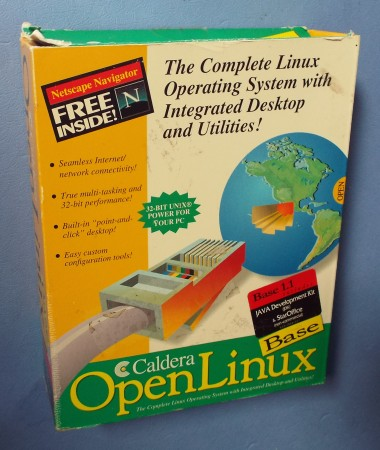
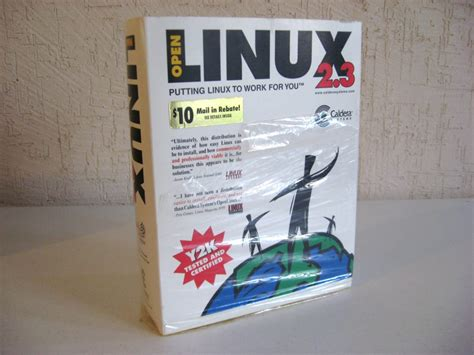
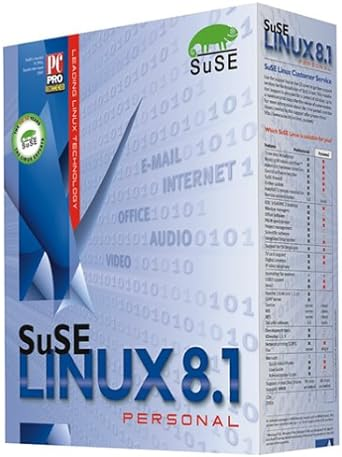
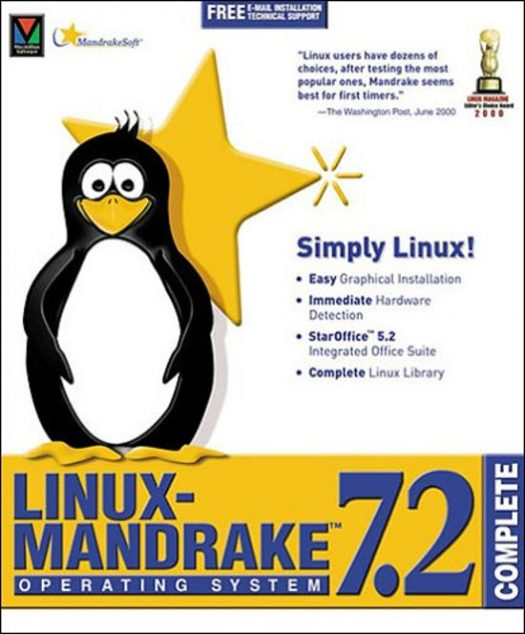
Ubuntu was better than what came before it in many ways, and it deserves credit for advancing desktop Linux adoption both then and now, but it was not “one of the first” by any stretch.
Ubuntu isn’t your only option
Thumbnail shows
Pop!_OSwhich is a fork of Ubuntu.For now. They’re switching to Debian.
Edit: I think I was thinking of Linux Mint?
Edit again: I was wrong twice, it was Vanilla.
https://linuxiac.com/vanilla-os-announces-major-shift-moving-from-ubuntu-to-debian/New article: Debian isn’t your only option
Yeah but it’s the best one
Step 1: install Debian
Step 2: install a bunch of packages essentially making it UbuntuYou are doing it wrong, then.
Step 3: Don’t install Snap & have a better time
Very true. Snaps are the worst. I don’t even get why Canonical hasn’t decided to just drop them already
Sunk cost fallacy?
Because they want control.
I was looking for some information on this but couldn’t find anything. Do you have a link or any more info on them moving to a Debian base?
Hm. I don’t think I dreamed it, but now all I can find is a Reddit post where mmstick says the next version will be based on Ubuntu 24.04.
Maybe I was conflating it with Linux Mint.
I was thinking of Vanilla. Thanks for the callout, I was lined up to be very confused at the next Pop OS release.
Linux Mint already has an alternative Debian edition maintained.
Ah that makes sense. I didn’t know about Vanilla so thanks for updating that.
I know Pop is updating with their own DE “soon” and thinking they were changing their base as well would have been quite an undertaking
Cosmic does look really nice.
I thought the DE was already out.
They’re making their own from scratch because modifying Gnome became too much of a pain. It’s got the same name, which is confusing.
This is probably why I had it in my head that they were doing the Vanilla thing, in that they are both departing from their long-standing fork.I mean I get that, but I could’ve sworn cosmic was already out.
The problem with going for alternatives is support.
Imagine picking a random Linux flavor, then trying to figure out how to change settings, only to get either hundreds of different answers.
Depends on the alternative. E.g. Fedora and OpenSuse have very active communities and lots of help available.
You’re not going to get a telephone number you can call, but the documentation maintained by Arch is far superior to that offered by Ubuntu. If support is your biggest concern, you’re far better served by Arch.
That’s fine for someone willing to read documentation, the average user would rather read a forum post, which Ubuntu has a shit load of posts about using and fixing it.
Lol I chuckled at that telephone number part
No one ever recommends OpenSuse…
I am kind of afraid of the corporate influence on OpenSUSE. Same for the relationship between Ubuntu and Canonical
It also makes it more resilient in the face of hard times. Point to be noted
Correct.
It is problematic in my experience. I think it comes down to Suse as a company lacking direction
Yeah exactly this. Not only lacking direction but the Upstream SUSE recently decided to move away from traditional desktop. Instead, they now offer ALP, which stands for adoptable linux platform. So OpenSuse has no real dekstop products to build of, and the community has to do much more work in order to produce a stable desktop distribution. I was a happy user for a almost 2 years, but in that time the community had discussion about many “small” things, many of which were about “principles”. This made ne very uncomfortable in using it, since it felt that every moment the “community” would decide something that would significantly change everything.
openSuSE is cool. It was the first distro I installed way back around 2010 and still the one I would recommend to new people.
deleted by creator
There is a shill on YT called Linuxcast. (I like his content, but he is defo a Suse shill) Personally i’d rather fix some arch fuckups, then to not have the AUR. (or if I don’t have the AUR, then just use Debian)
It is not bad, but slow after Arch.
Manjaro: Reliable and Cutting-Edge Features
Rarly laughed that hard. Reliably is by defenition wrong. Manjaro delays packages a few days in their main compared to Arch this can cause issues and makes them not compatible with the AUR which one of the most advertised and enabled by default feature.
You can read more about other problems here, https://github.com/kruug/manjarno
AUR is unsupported on Manjaro. Go back to Arch if you want that without issues
I tried out Arch for a while. The AUR is a bit of a wild west and at least I found it important to vet packages before installing them. It was a hassle. The same reason I only use one package from the OBS on Tumbleweed now.
Yeah, that one made me chuckle as well. But I guess the article ‘had to be written’ for reasons & it does actually have some overview value & nice pics … which I guess is what new users have to go on before they actually dive in.
I like that they hold the updates back. Manjaro is as reliable as any other desktop Linux I’ve used.
Anyone else notice that the first three are Ubuntu?
Corporate wants you to find the difference…
“They’re the same picture” Pam from The Office
Y’all seriously overestimate thr average user:
Debian. It’s simple, stable, minimal upkeep, rarely if ever has breaking changes, and all this out of the box.
Someone new doesn’t need to be thrown in the deep end for their first foray into linux, they want an experience like windows or mac: simple interface, stable system, some potential for getting their hands dirty but not too much to worry about breaking
Debian? First time i installed it wanted to use CD for packages instead of online. Don’t know why. Second time it didn’t have wireless drivers as these were non free.
It’s a great distro but not for newbies.
Fedora all the way!
Non-free-firmware is now handled automatically during installation as of the most recent Debian release, just FYI. For reference, see the note at the top of this wiki page: https://wiki.debian.org/Firmware
That’s a recent development. I also though you had to get a specific build, not the normal one.
Yep, fairly recent indeed, June of 2023, but it should work with any of the official installation media.
I think they only started doing this in the past year or so. It is decently new, but I think it is a good move.
I had this problem a week or two ago when I tried to install Debian 12 on my old MacBook pro. Ended up installing something else.
Interesting, that’s kind of surprising. Do you mind sharing which model of MacBook Pro it was? I had been considering getting one for cheap for testing purposes. Also, it may not be useful to you at this point, but I figured I’d drop a link to the Debian Wiki which has a page for MBP-specific info, in case anyone reading might benefit: https://wiki.debian.org/MacBookPro
I have a late 2011 MacBook pro with a broadcom wireless card.
I’ve used this laptop to distrohop a bit and the wireless driver is always an issue. You have to install the broadcom DKMS driver or wi-fi will randomly disconnect after a random amount of time.
Debian is in many ways the “deep end”. A big part of its development philosophy is prioritizing their weirdly rigid definition of Free Software and making it hard to install anything that doesn’t fit that. I’m not saying it’s not a good distro, but IDK if it’s beginner friendly.
The average user needs a web browser and maybe some office apps
Debian is in many ways the “deep end”.
The first time I tried Debian was when I was new to Linux, on a laptop with both the Ethernet and Wi-Fi unsupported. On top of which, it had an nVidia GPU. It was hard.
Now I know much more about Linux and checked the Motherboard for Linux support before buying it. Debian works pretty well.
So, it’s beginner friendly as long as someone helps you out with the installation after checking up on all the stuff you will need to run.
So, it’s beginner friendly as long as someone helps you out with the installation after checking up on all the stuff you will need to run.
In other words, it’s not beginner-friendly
I’m just gonna copy from my other reply to ulterno
Once again overestimating beginners. Any OS installation is inherently not beginner friendly, and requires helping them, regardless of Debian/Arch/Nix/windows/Big Sierra Lion Yosemite III, Esq. Jr. MD or whatever Apple’s calling it nowadays.
I find Debians defaults during installation very beginner friendly, set and forget type stuff. It won’t use the hardware to full potential, but that’s up to advanced users to decided after they’re comfortable with the training wheels.
I’ve only recently switched to Debian after a couple decades with Ubuntu (because snaps) and I had a few issues during installation.
The net install failed to configure my wifi so I had to download the DVD/CD install. That worked but then I had to manually nano several config files to fix about 5 broken things for some reason.
I installed it recently on a different system, and went with the Live option (gnome) and it installed 10x easier and smoother than Ubuntu. It installed in about 4 minutes (on a new/fast computer).
So I would say Debian Live is VERY beginner friendly, but the other install methods are all messed up for some reason. Ubuntu’s default option is the Live option so I think that if Debian just kinda hid the other options on their website it would be 100% beginner friendly…
I would reckon your original hardware also played a big part if it worked swimmingly this time around. I’ve installed half a dozen Debian- and Arch-based OSes on 3 different PCs and four different hypervisors at different times, and run a few more live CDs to boot, and my experience is that there is simply some hardware/emulated hardware that Linux in general refuses to play nicely with.
Debian does make it harder if there are no free drivers, but my non-free wifi cards (an intel and a broadcom) don’t play nicely with any of the OSes’ defaults
The two PCs were identical hardware btw, so in my case Live just worked 10x better.
the first distro i used is debian when i was getting on linux and im still using it
on a laptop with both the Ethernet and Wi-Fi unsupported
You’re right, it didn’t use to be beginner friendly. The installer has definitely gotten a lot better, and now they’re offering non-free-firmware in it; that avoids that whole issue…
On top of which, it had an nVidia GPU
Nouveau comes packaged. Most people that ditch nouveau do so because it doesn’t give them high performance metrics they expected out of their GPU, or it didn’t support multimonitor, or played poorly with RDP or any other issue which goes outside of my “watch youtube on my laptop” use case. That is, once again, deviating outside of “average user” territory. If you had problems getting any display or DE to work, that’s different, but you may find it sucks less now.
So, it’s beginner friendly as long as someone helps you out with the installation after checking up on all the stuff you will need to run.
Once again overestimating beginners. Any OS installation is inherently not beginner friendly, and requires helping them, regardless of Debian/Arch/Nix/windows/Big Sierra Lion Yosemite III, Esq. Jr. MD or whatever Apple’s calling it nowadays.
I find Debians defaults during installation very beginner friendly, set and forget type stuff. It won’t use the hardware to full potential, but that’s up to advanced users to decided after they’re comfortable with the training wheels.
🤣
Normal users want that potential for getting their hands dirty to be zero at best
Exactly this. To normal people the computer in their house is merely a tool; just another appliance that needs to work every time without any fuss.
Fedora is also apparently newbie friendly. IME, RHEL is not, but their free developer license is good if you want to learn working with it. Some employers use RHEL exclusively, so it’s not a complete waste.
I might give Fedora a try then, finally see what’s so yummy to all the users. Originally stayed away because I heard it was based of RHEL and didn’t want an office-grade OS to do tinkering on.
Also, how about that “freedom,” Red Hat?? what happened to FOSS???
Debian is good until you need to install a PPA :\
“PPA” is Ubuntu’s branding for third party repositories. So, of course you will have a hard time adding a Ubuntu-specific third-party repository to anything that isn’t the Ubuntu version it’s made for…
Debian of course supports third party repos, just like Ubuntu. On Debian they just aren’t called “PPA”.
For more information on how to add third party repos to Debian (or Ubuntu, if you don’t use Canonical’s weird tooling), check out the Debian Wiki page on UseThirdParty or SourcesList. There’s also an (incomplete) list of third party repositories on the wiki: Unofficial. And just like with PPAs, anyone can host a Debian repo.
out of the loop since I’ve moved to debian and been using flatpak for the last few years, what software are you installing via PPA that isn’t generally available via flatpak?
deleted by creator
To add to that, there’s so much “support” out there for Debian and by proxy Ubuntu. You can Google any error and you’ll find the fix. That’s what draws new people to them. Even my self even though I’m not new to the Linux ecosystem. Ubuntu makes a perfectly good and stable server operating system.
One time the installer got stuck on my hardware. Never again. Debian deserves a lot of credit but personally I will not go near an OS unless I am certain in advance that the initial installation will go without a hitch.
Ubuntu used to have the mission of being Linux For The Masses. Their marketing material used to include a bunch of trendy diverse young people standing on their logo. I’m pretty sure they’ve completely abandoned that cause in favor of trying to out-corporate RHEL. Their present-day web page has more corporate logos on it than the starting grid at a NASCAR race, and I challenge you to find the link to download “Normal Ubuntu for normal desktops.”
How much did The Masses pay for what they were using?
Well as a psychopath, I always recommend beginners start with Gentoo. Guaranteed they won’t go back to Mac or Windows. /s
By starting the switch to Gentoo, they either learn Linux well enough to never want to go back, or they fubar their system so bad that they can’t go back.
Back in early 2000s I ran Gentoo as daily driver for a year, while almost a Linux noob, but eager to learn. Installation instructions were long, but excellent.
It was fun, and worked well, but in the end the long compilation times got the better of me. Now I heard they are including binary packages, so the itch is coming back.
Right now running opensuse tumbleweed, which works fine, sometimes too smoothly.
Right? I’ve been on Tumbleweed a few years - never actually expected it rolling so effortlessly.
It would of been funnier if you left out the /s
I wish howtogeek would change back to their old ms paint logo.

So Ubuntu, Ubuntu and unstable arch… here let me have a go:
- Fedora
- Tumbleweed
- Endeavour OS
- easy install arch with extra repos, zfs and and dracut
- Bonus for the curious
- void
- Redcore Gentoo
I agree with the Fedora recommendation. Just a all round great experience.
My personal recommendations for beginner distros:
-OpenSUSE
-Fedora
-EndeavourOS
-KDE Neon
-ElementaryOS
-Zorin OS
-Linux Mint
Or you could just install ordinary Debian, since it’s stable and well-supported. Kind of a GOAT among distros, alongside Slackware.
imho Debian is far from beginner friendly. They will end up with a laptop without WiFi.
I don’t think this is still true, Debian 12 will install non free drivers
if you chooseby default. I had that issue on 11 though. I’m not sure how a graphical install works as of late but configuring sudo on a headless box is always tedious and would not be easy for a beginner to figure out.If you choose
That’s the key. A beginner will know very few things about that and giving him options will confuse them
Nonfree firmware is default in the Debian 12 installer.
I don’t use it personally, but I think there’s a good case for Linux Mint (Debian Edition)
“New to Linux? Where the most daunting thing about switching to it is how many choices you have in configuration? Well, good news! You have more choices than you think!”


